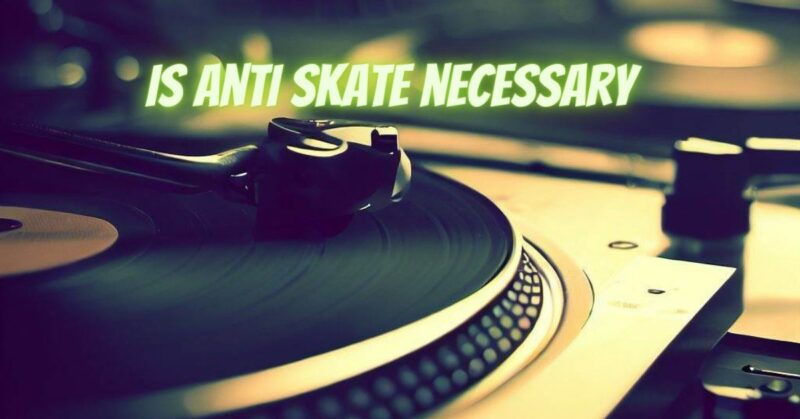When setting up a turntable for optimal vinyl playback, one of the components often discussed is the anti-skate mechanism. Anti-skate, short for anti-skating, is a feature found on most modern turntables, designed to counteract the lateral force exerted on the tonearm during playback. In this article, we’ll explore what anti-skate is, its purpose, and whether it’s necessary for your turntable setup.
Understanding Anti-Skate:
Anti-skate is a mechanism that counteracts the force that pulls the tonearm towards the center of the record as it plays. This inward force is generated due to the friction between the stylus and the vinyl groove, a force that can cause uneven wear on the record and distortion in the sound. Anti-skate mechanisms are designed to apply an equal and opposite force, effectively balancing the tonearm and stylus.
The Importance of Anti-Skate:
The primary purpose of anti-skate is to maintain the stylus in the center of the record groove, ensuring even contact with both groove walls. There are several key reasons why anti-skate is considered important for your turntable setup:
- Reduced Groove Wear: Anti-skate helps to distribute the wear on the vinyl groove more evenly. Without anti-skate, the stylus may press more firmly against one groove wall, causing accelerated wear on that side of the record.
- Improvement of Sound Quality: Proper anti-skate adjustment can significantly enhance sound quality. It can help reduce distortion, particularly in the inner grooves of the record, where the stylus is most susceptible to lateral forces.
- Stylus and Record Protection: Using anti-skate appropriately can extend the life of your stylus and protect your valuable vinyl records from excessive wear.
- Stability and Tracking: It contributes to the stability and tracking accuracy of the tonearm during playback, allowing for consistent and reliable performance.
Is Anti-Skate Always Necessary?
While anti-skate is a valuable tool for ensuring proper tracking and sound quality, there are some cases in which it might not be strictly necessary:
- DJ Turntables: DJs who use their turntables for beat-matching and scratching often disengage or adjust the anti-skate mechanism to suit their specific requirements. For these purposes, anti-skate may not be a top priority.
- Older Records and Turntables: Some older records and vintage turntables may not have anti-skate mechanisms. While it’s generally beneficial, it’s possible to enjoy vinyl playback without it, especially if you’re playing older, less valuable records.
- Listening Preferences: If you are a casual listener who doesn’t demand the utmost audio fidelity, you might find that anti-skate is less critical. However, even for casual listeners, using anti-skate appropriately can help prolong the life of your records and stylus.
- Specialized Equipment: High-end turntables, tonearms, and cartridges may incorporate advanced anti-skate mechanisms that automatically adjust to the specific tracking requirements. In such cases, manual adjustments may be less necessary.
In most cases, anti-skate is a valuable tool for ensuring optimal playback, protecting your records and stylus, and improving sound quality. However, its necessity can vary depending on your specific listening preferences, turntable setup, and the condition and age of your records. While it may not always be strictly required, understanding how to use and adjust the anti-skate mechanism can enhance your overall vinyl listening experience and preserve your vinyl collection for years to come.


